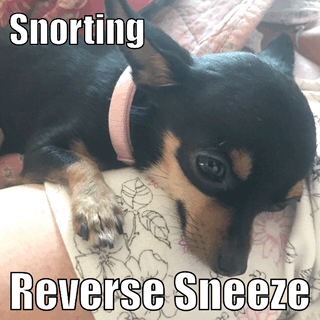I’ve been waiting for a long time to get a video of a dog performing the “reverse sneeze” and I finally got it. This dog is doing a classic reverse sneeze, except the pace is a little bit slower than some dogs that may be younger.
What’s happening is that air is moving inward through the nose being pulled by the dog who is trying to dislodge his epiglottis from the opening of the Soft palate.
A dogs soft palate is very much like yours in the roof of the mouth and further back where you have a uvula or a little “punching bag“ dogs don’t have that.
At the opening of the wind pipe or trachea, there is a little triangular piece of tissue called the epiglottis and that sticks out behind the soft palate. Normally they never touch. But then, during allergy season, or after a lot of coughing, or during the winter with dry heat and the cold, the soft palate may swell and become irritated. When the soft palate is more swollen, the epiglottis can get trapped behind it and then the dog has to do the reverse sneeze to free it up.
The dog is not choking, anytime they wanted to they could open their mouth’s and breeze easily through their mouth. It is not a sign of heart disease, it is purely a function of airway swelling and irritation. Some dogs do it all the time because they’re soft palate is elongated, “made that way” and sometimes is so bad that it requires surgery.
The majority of these dogs go on an anti-histamine and an anti-inflammatory and quickly resume normal breathing and health.





